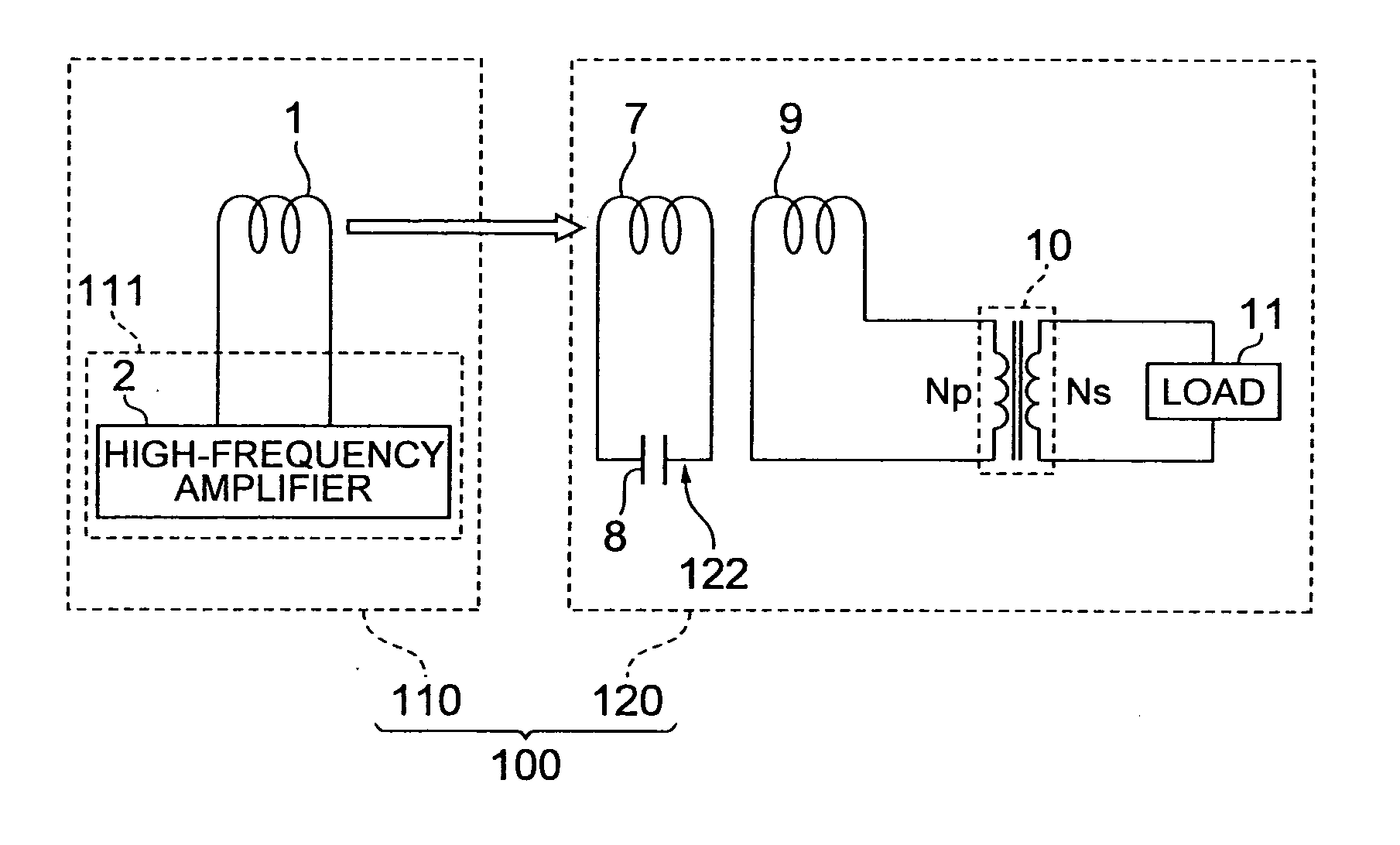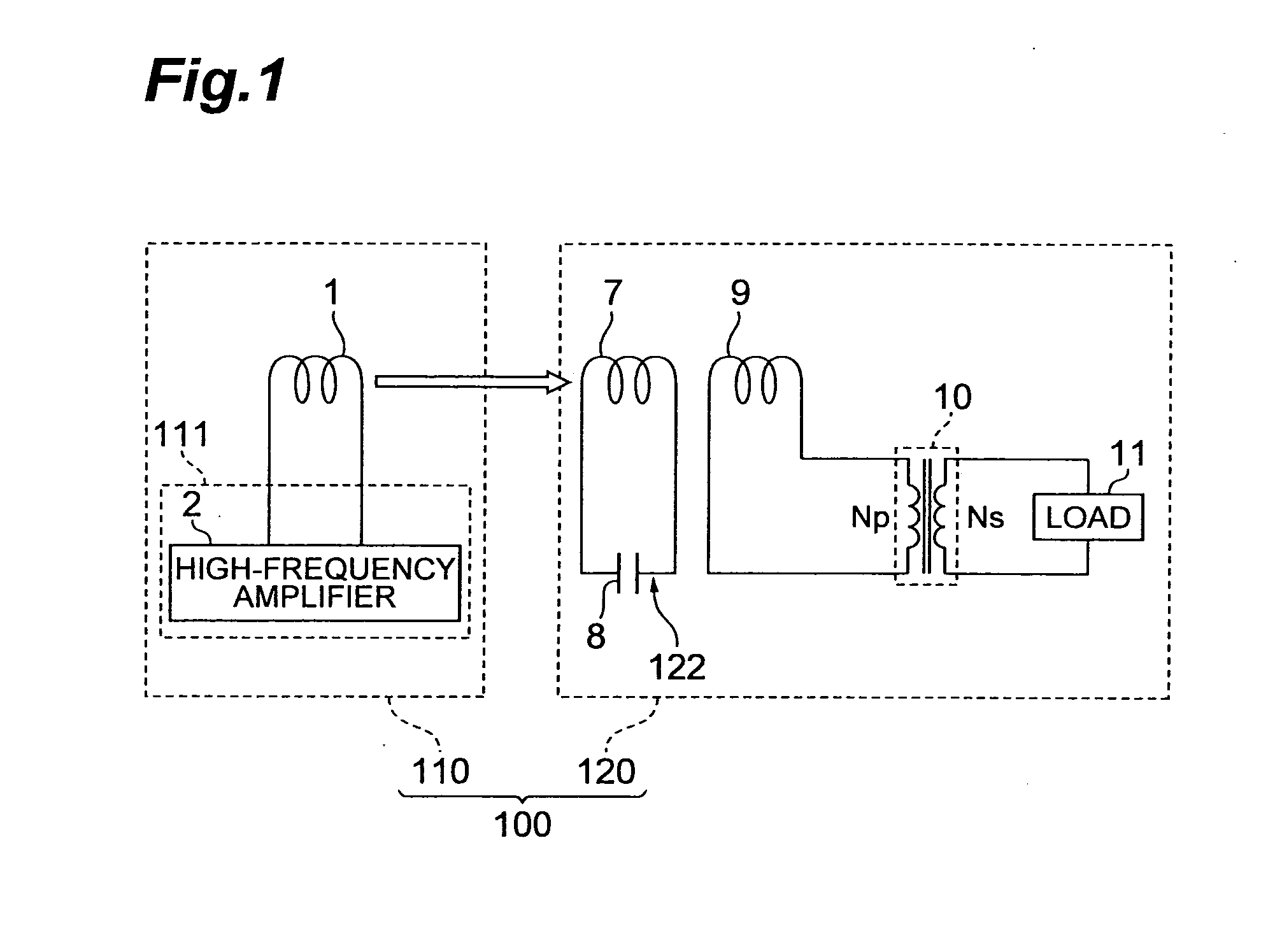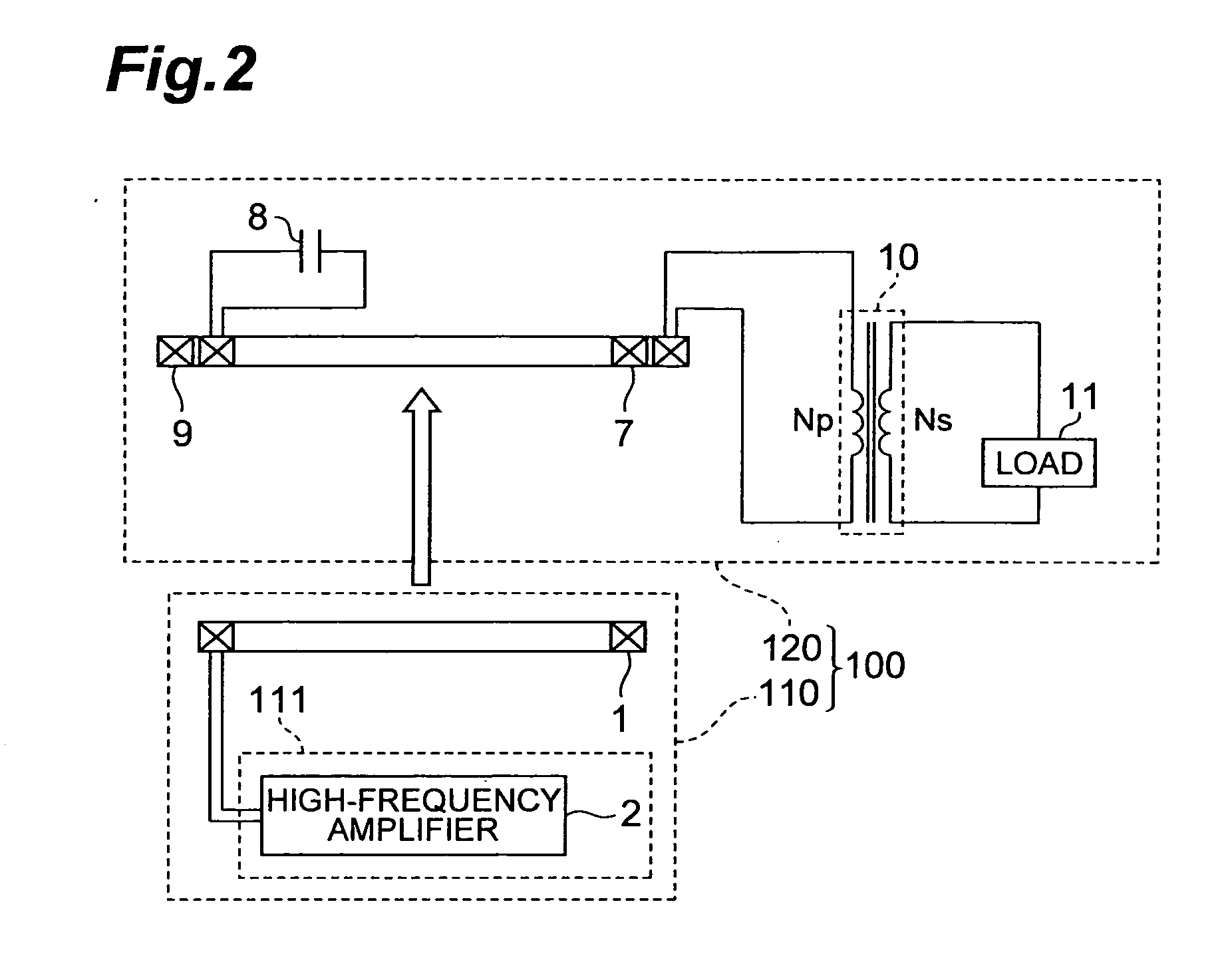Wireless power feeder, wireless power receiver, and wireless power transmission system
- Summary
- Abstract
- Description
- Claims
- Application Information
AI Technical Summary
Benefits of technology
Problems solved by technology
Method used
Image
Examples
first embodiment
[0043]FIG. 1 is a schematic diagram showing a schematic electrical configuration of a wireless power transmission system according to a first embodiment of the present invention. FIG. 2 is a cross-sectional diagram showing physical structures of a power feed coil, power receive coil and power receive load coil shown in FIG. 1. A wireless power transmission system 100 shown in FIGS. 1 and 2 has a wireless power feeder 110 and wireless power receiver 120 and transmits power from the wireless power feeder 110 to the wireless power receiver 120 by a non-contact method. Note that FIGS. 1 and 2 each schematically show the wireless power feeder.
(First Characteristics)
[0044]First, the wireless power receiver 120 is described. The wireless power receiver 120 has a power receive resonance circuit 122 configured by a power receive coil 7 and power receive capacitor 8, a power receive load coil 9, and output transformer (impedance converter) 10.
[0045]The power receive coil 7 of the power receiv...
example
[0070]Hereinafter, the wireless power transmission system 100 of the present embodiment shown in FIGS. 1, 2 and 8 is produced and evaluated in an example. This evaluation is a comparative evaluation with respect to the prior art shown in FIG. 3.
[0071]Similarities between the example and the prior art
[0072]resonance frequency of the power receive resonance circuit 122: Approximately 170 kHz to 200 kHz
[0073]The power feed coil 1 and the power receive coil 7: An inner diameter of approximately Φ160 mm and a thickness of approximately 10 mm with Litz copper wire in order to reduce the skin effect.
[0074]External diameter of the power receive load coil 9: A diameter of approximately Φ200 mm and a thickness of approximately 10 mm with Litz copper wire in order to reduce the skin effect.
[0075]Characteristics of the Example
[0076]The output transformer 10: A ferrite core was used (e.g., general EE type or EI type ferrite core), with the impedance on the primary side of approximately 500Ω
[0077...
second embodiment
[0082]FIG. 12 is a diagram showing an electrical configuration of a wireless power transmission system according to a second embodiment of the present invention. A wireless power transmission system 100B may have a wireless power receiver 120B in place of the wire less power receiver 120.
[0083]Unlike the wireless power receiver 120 of the first embodiment that has the output transformer 10, the wireless power receiver 120B has an output transformer 10B. The output transformer 10B is different than the transformer 10 in that the output transformer 10B has four windings Ns1 to Ns4 on the secondary side so as to be able to produce four outputs. Loads 11a to 11d can be connected to the secondary windings Ns1 to Ns4, respectively. The primary impedance of the output transformer 10B is, for example, 500Ω, whereas the impedances obtained when the loads 11a to 11d are observed from the secondary side of the output transformer 10B are 10Ω, 50Ω, 100Ω and 300Ω, respectively. The number of turn...
PUM
 Login to View More
Login to View More Abstract
Description
Claims
Application Information
 Login to View More
Login to View More - R&D
- Intellectual Property
- Life Sciences
- Materials
- Tech Scout
- Unparalleled Data Quality
- Higher Quality Content
- 60% Fewer Hallucinations
Browse by: Latest US Patents, China's latest patents, Technical Efficacy Thesaurus, Application Domain, Technology Topic, Popular Technical Reports.
© 2025 PatSnap. All rights reserved.Legal|Privacy policy|Modern Slavery Act Transparency Statement|Sitemap|About US| Contact US: help@patsnap.com



